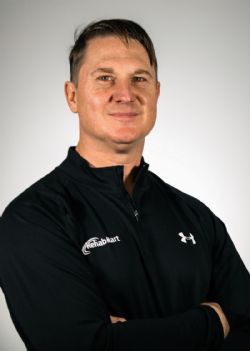 Written by Hulet Smith, OT
Written by Hulet Smith, OT
If you or a loved one need oxygen therapy in your daily life, then there’s no doubt you’re at least somewhat familiar with the perennial favorite, the oxygen concentrator. These devices are specially designed to collect oxygen and nitrogen present in ambient air and, after quickly filtering the air, provide it to a patient as safe, oxygen-enriched air for easier breathing.
So just how exactly do oxygen concentrators work? First, the device draws ambient air (which is mostly nitrogen and oxygen) through a compressor. The air is then run through several filtering apparatuses that remove the nitrogen and purify the oxygen. The purified oxygen is then run through a pressure regulator—controlling the flow of the air—and then is delivered to the patient via oxygen tubing and a mask or nasal cannula.
Given their popularity and clear usefulness, oxygen concentrators are numerous and diverse in their features and benefits. In light of this, finding the right product to meet the needs of you or your loved one may seem like a challenge. With that in mind, this article will present some need-to-know information and help you to determine which oxygen concentrator is the best fit for you by laying out some of the most important features and benefits to consider.
There are a number of different features and benefits associated with different oxygen concentrators, which can make them more or less ideal for any given patient. Because of this, we’ve outlined some of the most important variables to consider, helping walk you through the process so you can more easily choose the best concentrator for your needs.
Easily one of the most important factors to consider when purchasing an oxygen concentrator is the flow rate capabilities. Flow rate refers to the rate at which oxygen is able to travel from the machine to the patient.
The ideal flow rate for a patient is typically advised by a doctor, so it is recommended that you discuss any potential oxygen concentrator purchases with your doctor beforehand.
Certain oxygen concentrators may have lower flow rates (in the range of 250 to 750 milliliters per minute) while others may offer higher flow rates (such as the 2 to 10 liters per minute range). Because not all oxygen concentrators provide the same range of flow rates, it is crucial that customers review the flow rate offered by a product before making a purchase.
One of the first and most important points to consider when looking into oxygen concentrators is how mobile you will need your concentrator to be. Oxygen concentrators can range significantly in size and portability.
Some units are high-powered products that are designed to work hard and provide higher flow rates, but are typically larger and heavier. These models are often designed to deliver higher flow rates, and are a great solution for in-home use.
A number of portable oxygen concentrators are available. Typically weighing between 5 to 10 pounds, these portable oxygen concentrators sacrifice higher flow rates in order to be significantly easier to transport and use while out and about. This makes them the perfect tool for patients who do not require high oxygen flow rates.
After being compressed and filtered within an oxygen concentrator, the oxygen that is delivered to the patient has a specific percentage of pure oxygen content. This value is referred to as the oxygen concentration. Oxygen concentration level is affected by the number and design of the filtration systems included in your oxygen concentrator, as well as the effectiveness of the concentrator’s nitrogen-removing sieve system.
While the majority of products offer oxygen concentration values between 87 to 99 percent, it is important to note that this value can vary between oxygen concentrators. Typically, higher powered products that are designed for patients who require high oxygen flow rates are also capable of providing higher oxygen concentrations, whereas lightweight, portable oxygen concentrators for patients on the go do not usually require the highest oxygen concentrations.
While perhaps an obvious consideration, the amount of noise generated by an oxygen concentrator during its regular function is a commonly overlooked topic. Because of their wide range of constructions, layouts, and power levels, oxygen concentrators can vary in the amount of noise they generate while in operation.
Some smaller portable concentrator units are very quiet and unobtrusive. Other products, such as the high powered, high flow rate devices, can be a bit noisier while operating, as they both require higher power and have a higher rate of oxygen flowing from them.
Many products offer a variety of supplemental features or items that can help make the use of the oxygen concentrator easier or more effective. These additional features include carrying containers (boxes, bags), flow locking settings, easy to replace filter systems, oxygen concentrator accessories, and much more. Because the selection of additional features varies from product to product, it is worth reviewing what supplemental options are available with a concentrator before making a purchase.

A: Yes. Because they are medical grade oxygen treatment devices, oxygen concentrators cannot be sold or received without a valid prescription.
A: Yes. However, in order to sleep with your oxygen concentrator, your doctor will most likely want to conduct a sleep study to determine the best flow rate for you. Then, you’ll want to choose a concentrator that’s quiet enough that you can peacefully sleep while it’s operating.
A: This number varies by model, but portable concentrators typically last 4 to 7 years, while standard oxygen concentrators last longer, closer to between 6 and 10 years.
Ultimately, it is recommended that the oxygen concentrator is replaced once its oxygen concentration product begins to dip closer to 80 percent (as opposed to the usual range of 87 to 99 percent). At that point, it becomes necessary to either replace the filters or purchase a new product altogether.
A: Skin irritation and nasal dryness are the most common side effects, as is the case with most oxygen therapy tools. This is the result of the consistent airflow into the sinuses, and typically results in the case of long-term oxygen use or use of high flow rates of oxygen.
For more information on these products and others we recommend from all the best manufacturers in the industry, check out our Top 5 Best Oxygen Concentrators.
Be sure to check out our selection of nasal cannulas, oxygen masks, tubing, and oxygen tank refill systems.
Oxygen concentrators are an invaluable tool for convenient and effective delivery of oxygen to those patients who cannot get enough on their own. These devices utilize the ambient air in any room to filter, process, and compress, then ultimately deliver purely oxygenated air to those who need it.
However, due to the large variety of oxygen concentrators on the market, it may be difficult to choose the right one for your needs. Some users may prefer a lightweight, portable concentrator, while others prioritize high power and flow rate. Still others feel that the most important consideration is how loud a concentrator is when in use.
Choosing the right oxygen concentrator can seem complex, but when you sit down and methodically consider each feature, it's really not that difficult. And hopefully, we've been able to help.
To know more about oxygen therapy, check out the article Oxygen Therapy: The Complete Guide on Caregiver University. To read more about oxygen concentrators and get more great tips and tricks about healthcare and caregiving, read this great article Oxygen Tanks vs Oxygen Concentrators: 5 Tips to Help You Choose. When you're ready to compare products, be sure that your first stop is the excellent selection of oxygen concentrators at Rehabmart.com.

Co-founder/CEO of Rehabmart, Pediatric Occupational Therapist, husband, and father. Passionate about connecting special needs kids with superb nutrition, sensory integration, and complementary health strategies. Excited about Rehabmart's mission to become the premier online educational platform which empowers caregivers by spotlighting innovative devices and interventions to achieve optimal patient response and recovery.